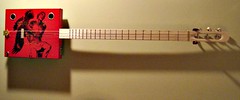
Another school year is only hours away. At colleges around the world, freshmen are being dropped off on campuses to begin their final chapter before young adulthood. The next four years, considered by many graduates to be the best years of their lives, will require self-initiative, focus and the ability to withstand heavy doses of caffeine in order to 'pull all-
nighters'. Of course, staying up all night to finish a paper or study for an exam implies a lack of self-initiative through the art of procrastination. Nevertheless, it is a higher education rite of passage.
.
University faculty members are also preparing for a year of new students and challenges in an era of budget shortfalls and declining enrollments in some cases. Rather than looking around the room in their 100 and 200 level classes to see who's there this semester, professors ought to take time to consider who is
not there as well. Essentially, there are two groups of students that will not appear in the college classroom this fall. The first one is comprised of the failed applicants. Despite having above average grades and test scores, these young men and women were simply edged out by their peers. What will they do? Some will take a few classes over the year, perhaps at a community college, to bolster their academic resumes or retake standardized tests with the hope of earning a higher score. At the same time, they will work to save money for the burdensome costs of tuition and room and board.
.
In 1860, presidential candidate Abraham Lincoln took time out of his busy summer schedule to write a consoling and inspiring letter to the best friend of his son Robert. Both had applied to Harvard. Unlike Robert Lincoln, however, George
Latham failed to gain admission. When the future president learned of George's rejection, he had an unusual visceral reaction. George, whose father had died some years earlier, was looked upon by Lincoln fondly as one of the family. Furthermore, Lincoln, who had less than a year of formal education himself, took the rejection to heart. On 22 July 1860, he expressed his thoughts in the following lines (edited):
.
My dear George,
.
I have scarcely felt greater pain in my life than on learning yesterday from Bob's letter, that you failed to enter Harvard. And yet there is very little in it, if you will allow no feeling
discouragement to seize, and prey upon you. It is a certain truth, that you can enter, and graduate in, Harvard University; and having made the attempt, you
must succeed in it. 'Must' is the word.
.
I know not how to aid you, save in the assurance of mature age, and much severe experience, that you cannot fail if you resolutely determine, that you will not.
.
In your temporary failure there is no evidence that you may not yet be a better scholar, and a more successful man in the great struggle for life, than many others, who have entered college more easily.
.
With more than a common interest I subscribe myself very truly your friend,
.
A. Lincoln
.
Lincoln's letter of encouragement to a student facing academic adversity has proven to be timeless. It should not only be read by those receiving rejection letters but also by undergraduate and graduate students alike in their quest to endure long days and sleepless nights of research and writing.
.
What about the second group of college hopefuls not in attendance this year? Rather than missing the cut from insufficient grades or lower test scores, they simply lack the means to finance a college education - and their numbers greatly eclipse the fortunate ones in class.
.
Hopefully, the next generation of college graduates will promote policies designed to reduce the large numbers of 'college-disappointed' men and women. Indeed, all hard-working high school graduates deserve an opportunity to pull an all-
nighter.
.
(Photo: Lincoln in 1860 - months away from his trademark beard)
.
J
Roquen
 Professor Jeremy O'Brien, Director of the Centre for Quantum Photonics (left) and Jonathan Matthews
Professor Jeremy O'Brien, Director of the Centre for Quantum Photonics (left) and Jonathan Matthews



















































